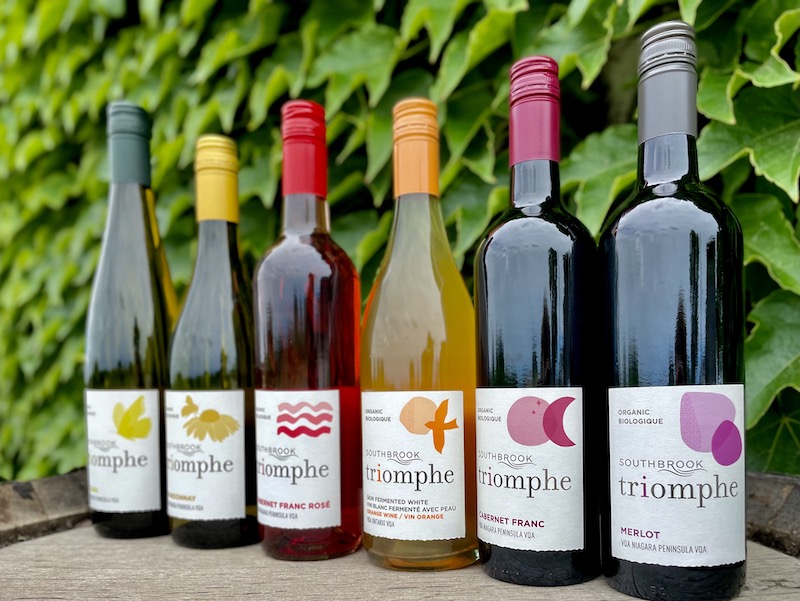Winemaking
At Southbrook, winemaking is a constant sensory create-and-evaluate process. It is borne out of respect for each batch and for what the wine is yearning to express.
Southbrook strives to produce the best quality wines possible, 100% hands-on, in small batches and barrel lots. We allow a long development time for each wine before releasing it. This furnishes us with a truly flexible palette for artisanal winemaking and guarantees our customers a fabulous bottle every time.
Techniques and Technologies: A Potent Blend of Old and New
Working with our different clones and varieties, we combine traditional and new methods of growing and tending. Our winery and equipment are purpose-designed for the types of winemaking we do.
Selecting and sorting grapes continues through the growing, harvesting and winemaking phases. This ensures that only uniform, and uniformly ripe, fruit goes into each fermentation vat. To establish a consistency of ripeness, shoot thinning, cluster thinning and green harvesting are done in the field. Grape clusters are vibrated over a sorting table to loosen stems and immature berries, then we hand-inspect and selectively grade fruit.
Vineyard Map
Triomphe

Triomphe wines are named in honour of the celebration, or triumph, when the Roman god Bacchus delivered the gift of wine to the people, providing a shared enjoyment and a relief from daily chores.
Southbrook’s Triomphe wines represent a full suite of wines that showcase the quality and vibrancy of our organic vineyards and winemaking.
Our objective with the Triomphe line is to ensure the availability of affordable, well-made organic wine. It is important that we provide a range of wines, both to have a product that suits all palates and to underline the scalability of organic viticulture and winemaking.
Eight different varieties, all organic, all priced between $20-30 – that’s a triumph
Fermenting Red Wine
Each vineyard planting, when picked, fits into one open-top, 80-hectoliter oak vat. This enables us to harvest a particular variety or clone and ferment it separately. Must (juice, skin and seed) gravity-settles and we rely on indigenous yeast, naturally present on grape skins, for fermentation. We introduce oxygen by draining the wine and re-pouring it into vats three times daily during the first two weeks of fermentation.
During fermentation, skins and wine soak together until, with the winemaker’s blessing, it is pressed. After 12 months of barrel aging, each wine lot is tasted and assessed for its potential as a varietal or blended wine.
Making Whites & Rosé
For Chardonnays, whole clusters are harvested, sorted and pressed without de-stemming. The must is settled, its clear juice racked in barrels, each as a unique batch. After 10 months’ aging, barrels are assessed and blended to make Triomphe, Whimsy! and Poetica. Stems and skins go to vineyard compost. For other whites and rosé, whole clusters are pressed, with the juice fermented in stainless steel vessels, using indigenous yeast when conditions allow.
Biodynamics: Improving Wines and Simplifying Winemaking
Biodynamic grape-growing leaves enough nutrition to feed the yeast, but too little to encourage undesirable microbes. When such natural balances and stability are maintained, a wine requires little manipulation. This also lowers the need for sulfites, in line with organic winemaking requirements and key to our winemaking philosophy.
Our cellar processes are in accordance with the biodynamic calendar. When bottling our wines, we use the lightest practicable glass bottles to reduce fuel usage and transportation costs.
